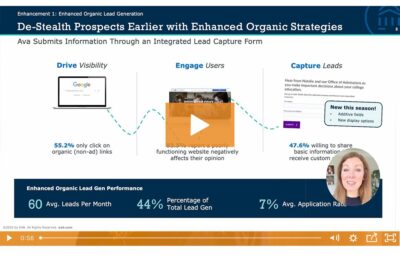The 6 stages of the adult degree completer journey
Recruitment tactics to boost enrollment at each stage
As institutions reel from the impact of COVID-19, enrollment leaders face renewed pressure to recruit new and different audiences to offset expected declines in traditional undergraduate enrollment. Some institutions have begun to focus on recruiting adult degree completers, or students 25 and up with some college credit but no bachelor’s degree.
But degree completers’ journeys to reenrollment are long and meandering—adding to a lengthy list of reasons why this audience is difficult to recruit, ranging from a lack of test taker lists to students’ own competing priorities.
Explore this infographic to learn more about the stages of adult degree completers’ journey to reenrollment. Discover their motivations, insights from EAB’s survey of 1,000+ prospective degree completers, and tactics enrollment leaders can use to recruit this important student group each step of the way.
Survey Methodology
EAB and The Center for Generational Kinetics (CGK) conducted video interviews with 30 US adults with some college credit who indicated they were open to continuing their post-secondary education at a four-year institution. To supplement and quantify the insights from these interviews, EAB and CGK then surveyed 1,010 US adults.
More Resources

Achieving Today’s Ever-Growing Graduate Enrollment Goals

Understanding and Navigating Today's Graduate Enrollment Staffing Concerns

